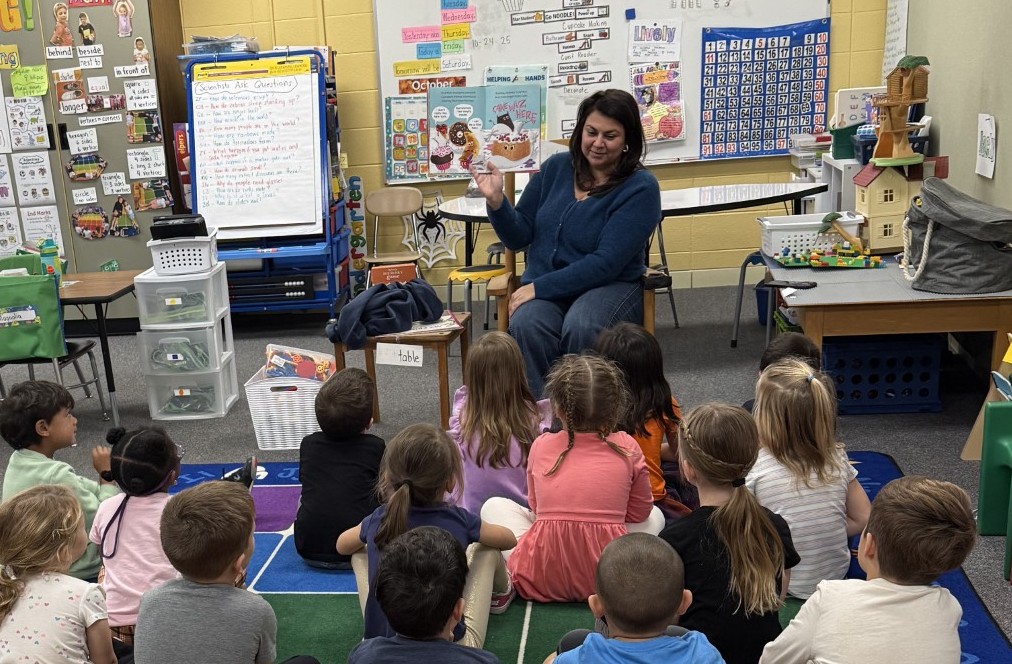I Took OpenAI and Common Sense Media’s Free Course For Teachers
The one-hour free course from OpenAI and Common Sense provides lots of good prompt writing advice and an overview of using AI as a teacher.

In late November, OpenAI and Common Sense Media launched a free AI course for K-12 educators designed to help educators utilize AI tools in their classrooms effectively. After trying it, I was impressed with the course from the makers of AI and the nonprofit.
The course, which takes less than an hour to complete, incorporates short videos and readings, quizzes, and interactive activities utilizing AI. Overall, it offers a strong overview of teaching with AI, with particular emphasis paid toward generating effective prompts in an education setting. Though some lessons may seem a bit basic for those already familiar with ChatGPT or another generative AI tool, the course does a thorough job of providing an overview of AI, including protecting student data and ensuring that a human instructor is always in the driver’s seat.
Here is a closer look at OpenAI and Common Sense Media’s AI course for teachers.
OpenAI and Common Sense Media’s AI Course For Teachers: Creating Effective Prompts
One of the focuses of the course is how to write effective AI prompts in various settings. This portion is particularly helpful. I imagine it will help many users get more out of ChatGPT and other tools.
A key portion of this segment of the course is a detailed discussion of the CRE Framework for writing AI prompts:
C for Context. Users should provide context for each prompt. For example, the course text recommends a line such as “Imagine you teach in a high school that has the following demographics.”
R for Role. The course advises us to provide ChatGPT with info on the role it should play while generating text. For example: “You are a high school biologist.”
Tools and ideas to transform education. Sign up below.
E for Expectations. ChatGPT works best when users create prompts that detail specific expectations. For instance, the course recommends language such as “Write a 15-minute biology lesson plan.”
For me, I intuitively write prompts that have clear expectations but have begun learning I often fall short with the “role” and “context” portions of the prompt.
Effective Prompt Examples
Beyond providing an introduction to the CRE Framework, the course offers a PDF file filled with prompt templates. These can be used by educators to create their own context-specific prompts, which is helpful. Equally as important, I felt that by reading these I got a better sense of what goes into an effective prompt.
For me, reading some of these as well as high-quality prompt examples provided in the session helped me get a better understanding of how I can improve my own prompt writing. For example, here is one template included in the prompt library:
Prompt: Prepare a brief survey that contains 10 questions for students on how they feel about (insert topic)
Context: You want to understand students' opinions about (topic)
Role: An education survey designer
Expectation: Develop a concise survey that gathers meaningful feedback to share with parents.
Other Highlights From The Course
Given that this course is co-created by OpenAI, it’s no surprise that it is pro-AI use in education. However, the course does make a point of addressing potential problems with bias and privacy. Teachers are advised that some versions of ChatGPT inputted data for future training, and that personally identifiable information regarding a student should never be shared with ChatGPT. Most of us know this already, but it’s a good and important point to stress in any discussion of AI use.
The course also covers the Human-In-The-Loop framework, which places AI use in education firmly within the control and direction of a human. This highlights the vital role teachers play in education regardless of how technology is integrated, which is another important point, and I was glad to see it included.
I might only change two aspects of the course. The first module is very basic and it would be nice to have the option of testing out of it. Second, I wanted slightly more feedback when it comes to prompt writing, as I was left slightly confused by the CRE Framework. Should you write the prompt and then make sure it covers context, role, and expectation? Or should you literally use language such as, “for context, I am teaching a master's level workshop on X subject…” I will experiment and find the answer on my own, but some additional guidance there could be helpful.
Despite these nitpicking complaints, overall I found this course to be really helpful and efficient. It’s a great way to improve one’s AI use and learn the basics of prompt-writing best practices—all in less than an hour.
Erik Ofgang is a Tech & Learning contributor. A journalist, author and educator, his work has appeared in The New York Times, the Washington Post, the Smithsonian, The Atlantic, and Associated Press. He currently teaches at Western Connecticut State University’s MFA program. While a staff writer at Connecticut Magazine he won a Society of Professional Journalism Award for his education reporting. He is interested in how humans learn and how technology can make that more effective.

